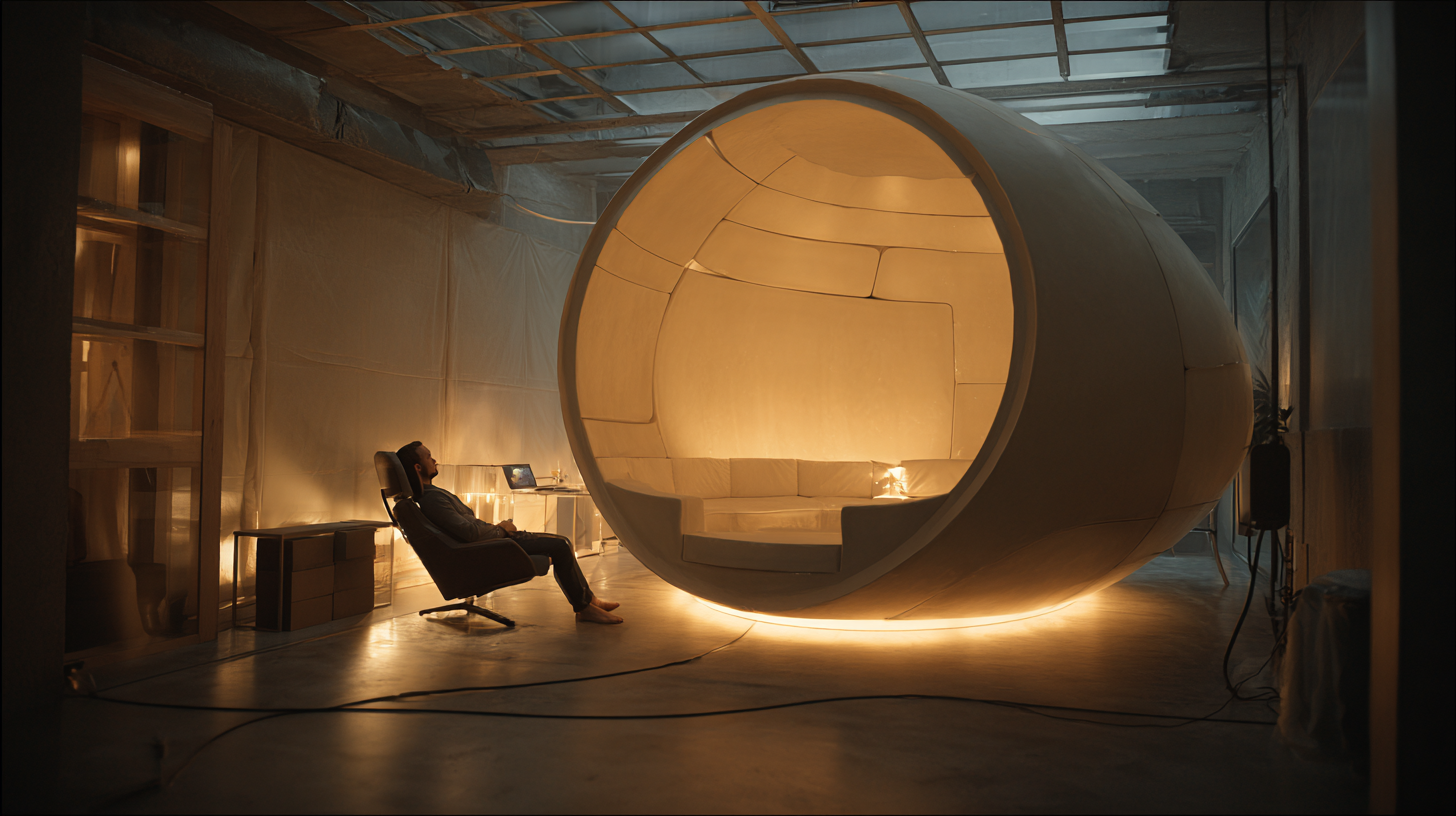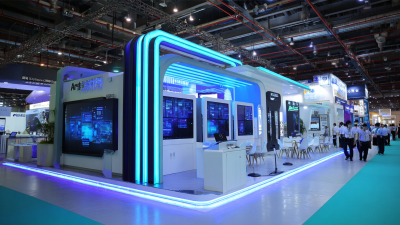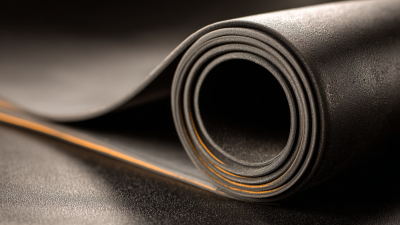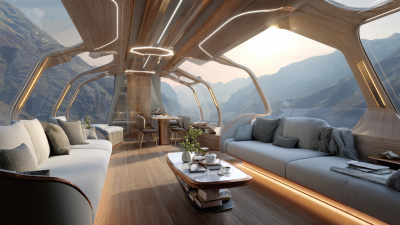Leave Your Message
 In the realm of modern design, the integration of innovative technologies is paramount to achieving both functionality and aesthetic appeal. Among these advancements, Air Chamber technology stands out as a transformative solution that bridges the gap between structural integrity and design flexibility. This approach harnesses the unique properties of enclosed air spaces to enhance the performance of materials, enabling lighter constructions without compromising durability.
The benefits of Air Chamber technology extend beyond mere weight reduction; they include improved insulation, enhanced acoustic properties, and a remarkable capacity for energy efficiency. As designers and engineers continue to explore the versatile applications of this technology in various fields, from architecture to product design, the possibilities seem limitless. This exploration not only highlights the advantages of Air Chamber technology but also showcases its role in fostering a sustainable and innovative design paradigm that meets the evolving needs of society.
In the realm of modern design, the integration of innovative technologies is paramount to achieving both functionality and aesthetic appeal. Among these advancements, Air Chamber technology stands out as a transformative solution that bridges the gap between structural integrity and design flexibility. This approach harnesses the unique properties of enclosed air spaces to enhance the performance of materials, enabling lighter constructions without compromising durability.
The benefits of Air Chamber technology extend beyond mere weight reduction; they include improved insulation, enhanced acoustic properties, and a remarkable capacity for energy efficiency. As designers and engineers continue to explore the versatile applications of this technology in various fields, from architecture to product design, the possibilities seem limitless. This exploration not only highlights the advantages of Air Chamber technology but also showcases its role in fostering a sustainable and innovative design paradigm that meets the evolving needs of society.
Air chamber technology is revolutionizing contemporary architecture by enhancing both structural integrity and energy efficiency. The incorporation of air chambers into building designs allows for improved insulation, effectively reducing heat transfer and lowering energy consumption. This technology not only contributes to sustainability efforts but also meets growing demands for eco-friendly construction. By employing air chambers, architects can create more comfortable indoor environments while minimizing reliance on artificial heating and cooling systems.
Moreover, the innovations stemming from air chamber technology extend to aesthetic possibilities in design. These chambers can be integrated into various materials, providing both functional and visual benefits. They offer flexibility in architectural forms, enabling the creation of striking facades and unique structural elements that stand out in urban landscapes. As designers continue to explore the capabilities of air chambers, the potential for enhancing both the performance and appeal of modern buildings becomes increasingly apparent, paving the way for a new era of sustainable and innovative architectural solutions.
| Feature | Description | Benefits |
|---|---|---|
| Thermal Insulation | Air chambers provide significant thermal barriers that reduce heat transfer. | Enhances energy efficiency in buildings, reducing heating and cooling costs. |
| Sound Insulation | The design helps to absorb and dampen sound vibrations. | Creates a quieter, more comfortable indoor environment. |
| Lightweight Structure | Air-filled chambers contribute to a lighter overall material compared to solid components. | Reduces load on structural elements, allowing for innovative designs. |
| Sustainability | Utilizes modern materials and methods to enhance sustainable practices. | Lower environmental impact and improved lifecycle performance. |
| Design Flexibility | Allows architects to create more complex and varied shapes. | Increased creativity in design while maintaining structural integrity. |
Air chamber technology is revolutionizing furniture design, particularly in the realm of comfort and customization. One notable application is in adjustable mattresses, which utilize air chambers to allow users to modify the firmness to their liking. This innovation enhances the overall sleep experience by accommodating different preferences and body types, thereby promoting better rest and health. Such functionality caters not only to individual comfort but also addresses various sleep-related issues, making it a significant advancement in furniture design.
Beyond mattresses, air chamber technology is finding new life in other furniture applications. For instance, it can be integrated into seating systems, allowing for adjustments in support and comfort that can be tailored to the user’s needs. These innovations represent a shift towards dynamic furniture solutions that adapt to the human form and activity. Moreover, the emerging trend in material production, facilitated by improved air flow technologies within build chambers, is enabling manufacturers to create more sophisticated and efficient designs. This intersection of comfort, technology, and creativity epitomizes the modern evolution of furniture design, making air chamber technology a critical element in enhancing user experience across various products.
Air chamber technology has emerged as a groundbreaking innovation in enhancing user comfort across various design sectors, from automotive to furniture. According to a report from the Furniture Industry Research Association, products utilizing air chamber systems can improve ergonomic support by up to 40%, significantly reducing pressure points that often lead to discomfort. This technology allows for the adjustment of firmness levels, ensuring personalized comfort based on individual preferences and body types.
In the automotive industry, a study published by the International Journal of Vehicle Design revealed that incorporating air chambers into seating can reduce driver fatigue by 30% during long journeys. These air chambers can dynamically adapt to movements and weight distribution, providing optimal support that traditional foam padding cannot match. As more designers recognize the benefits of air chamber technology, we can expect to see it integrated into more areas of our daily lives, ultimately enhancing comfort and overall user experience.

Air chamber technology is revolutionizing modern design by enhancing sustainability and energy efficiency. This innovative approach involves the use of strategically placed air chambers within structures, which serve to insulate and regulate temperature. By reducing the dependency on traditional heating and cooling systems, air chamber solutions contribute significantly to lower energy consumption and reduced carbon footprints. As architects and designers continue to embrace these technologies, we're witnessing a shift towards more eco-friendly practices in construction.
Tips for implementing air chamber technology include careful planning of the chamber placement to maximize airflow and insulation benefits. Incorporating materials with low thermal conductivity alongside air chambers can further enhance energy efficiency. Additionally, consider integrating smart technology to monitor and adjust air chamber performance in real-time, ensuring optimal environmental control while maintaining a sustainable ethos.
With increasing awareness of environmental issues, air chamber technology not only meets the demands of modern aesthetics but also fulfills the critical need for sustainable building practices. Designers seeking to improve their projects' energy efficiency should explore these innovative solutions more deeply and consider their long-term benefits for both the environment and the end-users.
The integration of air chamber technology within smart home systems is paving the way for groundbreaking innovations in modern design. This technology, which utilizes air-filled chambers to provide structural support and energy efficiency, is being incorporated into various products, from furniture to building materials. As consumers become more environmentally conscious, manufacturers are increasingly looking to air chambers to reduce material waste and enhance sustainability. This trend not only optimizes space but also contributes to the overall aesthetic appeal of contemporary designs.

Looking ahead, the applications of air chamber technology in smart homes promise to revolutionize how we interact with our living environments. With advancements in IoT (Internet of Things), these systems can adapt to users' needs, improving comfort and efficiency in real-time. For example, air chambers can be engineered to respond dynamically to changes in temperature or pressure, allowing for smarter climate control and energy management. As smart homes evolve, the seamless integration of air chamber technology will likely enhance user experiences, making homes not just smarter, but also more adaptable and responsive to our daily lives.







